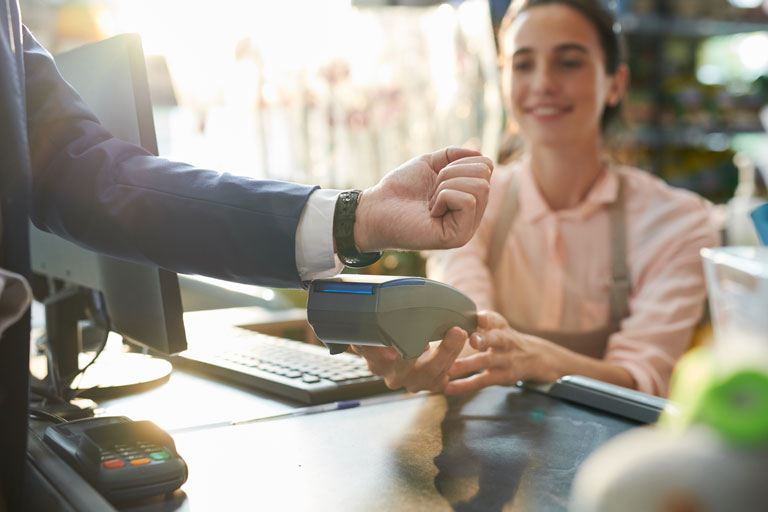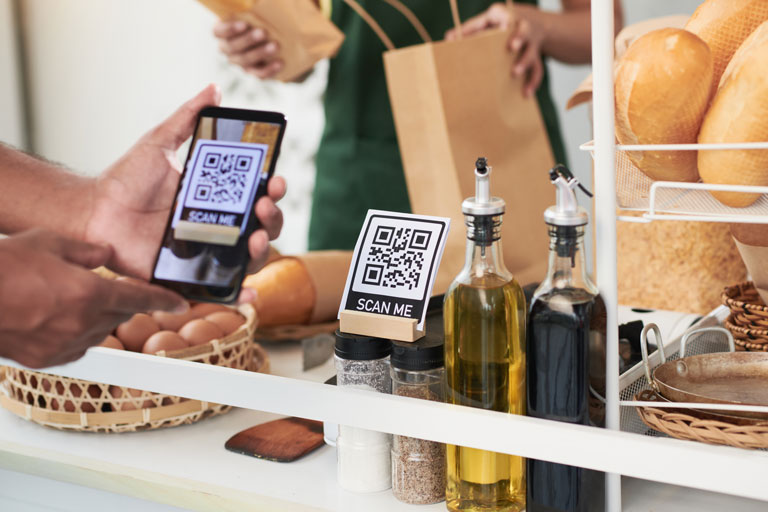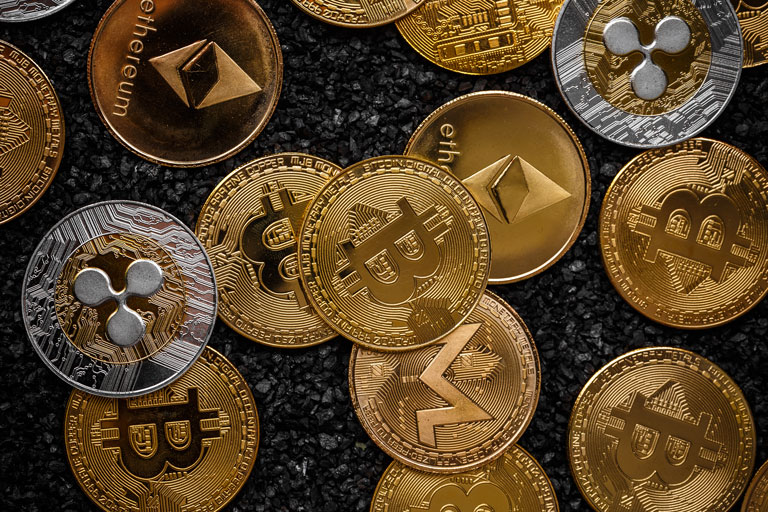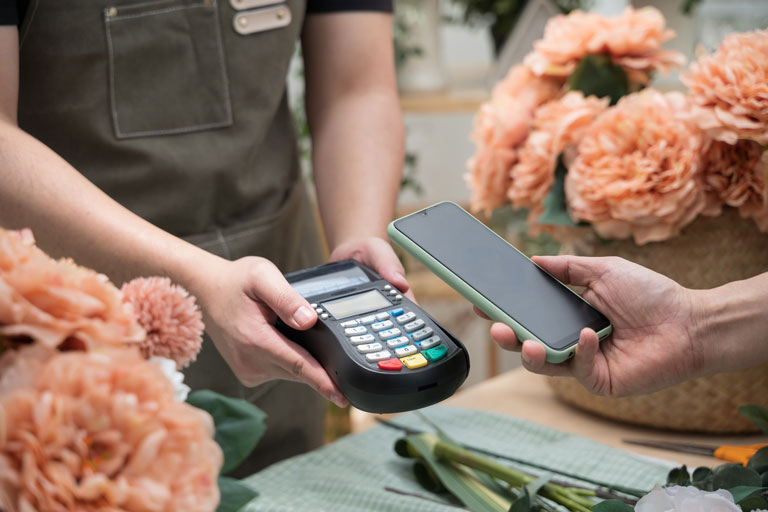As technology becomes increasingly more intelligent, the future of electronic payments is changing commerce as we know it. Cash is no longer king if consumer statistics have anything to say about it. As recently as 2021, 80% of polled consumers said they prefer digital payment methods over cash or paper checks.
Additionally, from a business perspective, it is telling that electronic payments may ironically mean more cash flow (albeit without actual cash). While the average cash transaction is $22, the average non-cash transaction is almost six times that, at $112.
This means that electronic payment methods including point-of-sale digital payments and online payment technology are the future of global payments.
But what is an electronic payment, exactly? What is the future of payment technology? And which digital payment companies are poised to ride the wave of this industry trend toward the shores of profit?
What is an Electronic Payment System?
Electronic payments work to facilitate the transfer of value from one party to another. For example, from a customer to a merchant. Merchants can choose from numerous digital payment platforms with their merchant service provider. Whichever solution best fits their business needs.
This involves several players. Including the customer’s bank, the merchant’s bank, the payment processor, and credit card companies (if credit cards are being used). The entire affair is a complex ecosystem of devices, platforms, and networks. Much of it often operates entirely without cash.
Mobile Payment Apps
App culture has taken the world by storm as many consumers use smartphones to navigate life. Around 26% of the world’s population is using mobile payments. To further detail this, the top ten mobile apps have a combined 3.37 billion users.
Digital payment products like Venmo, Zelle, PayPal, and CashApp are becoming so popular, they have entered common user jargon such as “Hey, can you Zelle me?” Many of these applications are P2P. This means they facilitate the transfer of money directly from one party to another.
This is in contrast to more traditional payment technologies that might involve the use of credit cards. Mobile payment apps offer consumers convenience and flexibility. Users can send money from wherever they are–as a form of payment for products and services or as a gift to friends or family. Moreover, many of these apps are now offering click-to-pay integrations with third parties such as retail vendors.

Contactless Payments
Contactless payments became very popular during the Covid-19 Pandemic. Consumers worried about considerations like social distancing, masking, and sanitizing surfaces. Many hands touch card readers during the day. Making it a worrisome aspect of in-person shopping for some consumers.
Digital payment solutions that eliminated touching a POS terminal, became more widely implemented. In 2021, more than two-thirds of American retailers accepted some form of contactless payment. Such forms included online transactions, over-the-phone payments, and contactless payment cards that can be tapped or waved over a card reader.
Contactless payments are here to stay. One reason is the speed and convenience. An American Express survey found that 73% of consumers cited convenience. While another 54% cited speed as the reason why they prefer contactless payment solutions.
Click to Pay
Did you know that around 21% of polled consumers abandon their shopping carts due to a lengthy checkout process? In a world where attention spans are shrinking to the size of TikTok bites, grabbing a credit card and inputting card numbers is a chore.
Click-to-pay applications remove this burden. They provide a merchant with the information necessary to complete a purchase. Tens of thousands of merchants in the U.S. have already rolled out some variations of Click to Pay, including large name-brand retailers like Crate & Barrel, Expedia, Lowe’s, and Marriott, to name a few.
These click-to-pay applications may integrate with your bank, a credit card, or a payment application like PayPal. The future of some click-to-pay options is tied to the future of e-wallets. These two aspects of the digital payment system are ripe for integration.
Especially for consumers shopping on their phones–where a mobile or digital wallet would be stored. Or within the context of a single large retailer like Amazon or Walmart.
Buy Now, Pay Later
This is not a concept that is specifically a digital payment system. In fact, the idea of buy now, pay later is as old as commerce itself. But digital payment technologies have made the BNPL explode in the area of eCommerce.
This is because BNPL financing is often easier to get than a credit card. Additionally, it often carries 0% interest (although there may be fees built-in). Consumers who are eyeing something desirable online outside of their price range can use an integrated application like Klarna or Afterpay to make the purchase in installments.
Some of these applications do not even check the purchaser’s credit. While others do a soft credit check that does not impact the credit score. The fintech startups focusing on the BNPL space are, therefore, circumnavigating the traditional borrower-creditor relationship between consumers and the credit cards they’ve traditionally shopped with. As many as 150 million shoppers used Klarna in 2021, which was a 70% increase from the year before.

QR Codes
A QR code looks like a small piece of modern art, but the white and black checkerboard is actually a way of storing a URL. Consumers can open a phone camera, wave it over the QR code, and be directed to a payment website, creating a payment experience completely devoid of cash.
A payment experience that combines a QR code with a mobile payment app requires no credit card or wallet at that matter. QR code technology offers excellent flexibility for businesses selling goods and those selling services as well.
These merchants can place the QR code on an invoice for services rendered. Many mobile payment apps have created QR code integrations, such as CashApp, which makes these types of e-payment quick and convenient.
Small business owners with mobile operations—such as food vendors—may find QR codes especially useful, since they require no internet connection, electricity, or hardware on the end of the merchant.
Mobile Wallets
A mobile wallet stores credit card information right on a mobile phone. Incidentally, they can store other card information as well, such as a Driver’s License or medical insurance card.
When a consumer makes a purchase at a brick-and-mortar location, the mobile app uses a radio wave technology called Near Field Communication (NFC) to send the payment information to the merchant’s point-of-sale terminal.
iPhones carry an Apple Wallet, Androids have a Quick Access Wallet, and Samsung Phones have Samsung Pay. However, there are also third-party apps that can be installed, such as those offered by PayPal, Google, and Venmo.
Sometimes the terms digital wallet and mobile wallet are used interchangeably. Although technically, a mobile wallet refers specifically to financial information stored on a mobile device.
In any case, some mobile or digital wallets are closed or semi-closed. Meaning only the retailers that issued them can accept them. Examples of this include Amazon Pay and Walmart Pay, which can only be used at those retailers or their partners. In contrast, Venmo and Zelle are considered open banking. Users can send money to a variety of recipients.

Cryptocurrency
Cryptocurrency is a very confusing area for most consumers. The fact that there are thousands of different cryptocurrencies does not make matters easier. The crypto space is also highly unregulated and full of startups, some of which crash and burn. But some coins have shown to be enduring and stable, one example being Bitcoin.
More than 36% of small and medium-sized businesses were accepting Bitcoin as recently as 2020. And as many as 75% of the surveyed plan to start accepting some form of crypto within the next two years. Subway, Burger King, KFC, and Pizza Hut are just a few of the recognizable names that have begun to dabble in accepting crypto payments.
The fact that the nature of these businesses involves smaller, everyday transactions is significant. Because it represents the influx of consumers that are using decentralized currencies for purchases, instead of cash or credit.
Cryptocurrency can be used with specialized cards offered by the likes of Visa, Mastercard, or third-party integrations. Crypto is also mostly used for online purchasing. As crypto becomes used more by consumers, there may be a sort of digital payment revolution—with a new wave of POS terminals– offered by payment processing startups that focus on crypto.
Real-Time Payments
A new financial service that a few banks are now offering is called Real-time payments (RTP). With digital payments, one inconvenience for merchants can be the settlement wait time. Most credit card batches take a day or two to settle into the merchant’s account.
But with innovation, RTP has been born. RTP are transactions that are initiated and settled almost instantaneously. The real-time payment network aims to provide access 24x7x365. Which means it is always online to process payments. Including weekends and holidays. A rarity in the financial industry.
Financial institutions such as Citizens Bank, Bank of America, and PNC are among the first to adopt this technology.
Wrap-Up
As you can see, electronic and digital payment options range from wallets stored on your phone to QR codes to the traditional swiping of a physical credit card. The digital payments industry is expected to reach $19.89 trillion by 2026, with a 24.4% CAGR, so it’s a rapidly expanding place with hundreds of startups.
But the overarching theme of digital payments seems to be convenience. As many as 70% of consumers say they wish they could ditch their wallets. Preferring instead, the convenience of paying without cash, or even without a physical piece of plastic.
Electronic and digital payments offer the security, speed, and convenience these consumers are seeking for purchases. Without a doubt, the future of this industry lies in anything that can make it as convenient as possible.
Leading some to suggest that the ultimate future of electronic payments may be biometric…that is, a thumbprint or a facial recognition system. But that’s a story for a different purchase.
To contact sales, click HERE. And to learn more about ECS Electronic Payments visit Contactless & Mobile Payments.
